Last Updated on August 28, 2024
Run-Flat Tires: Ensuring Continuous Movement for Trucks
Tire technology ensures safety, efficiency, and reliability in the dynamic and demanding trucking world. Among the various advancements in this field, run-flat tires have emerged as a crucial innovation, especially for trucks. This introduction delves into the technology behind run-flat tires and underscores their significance in the trucking industry.
Overview of Run-Flat Tire Technology
With run-flat tire technology, a car can travel a short distance slower even after a tire has significantly lost air pressure or developed a puncture. This feature is essential for trucks, which frequently transport large, heavy goods across long distances.
Run-flat tire systems mostly come in two varieties:
- Self-supporting tires: tires with strengthened sidewalls that are more rigid and stiff are known as self-supporting tires. Even in a complete loss of air pressure, the car’s weight can be supported by these reinforced sidewalls in a puncture.
- Auxiliary Supported Systems: If a tire loses air, this system uses a rigid rubber ring or another structure to support the car’s weight.
Run-flat tires are equipped with specialized beads that ensure the tire remains attached to the rim even when deflated. This feature prevents the tire from detaching and causing a loss of control of the vehicle.
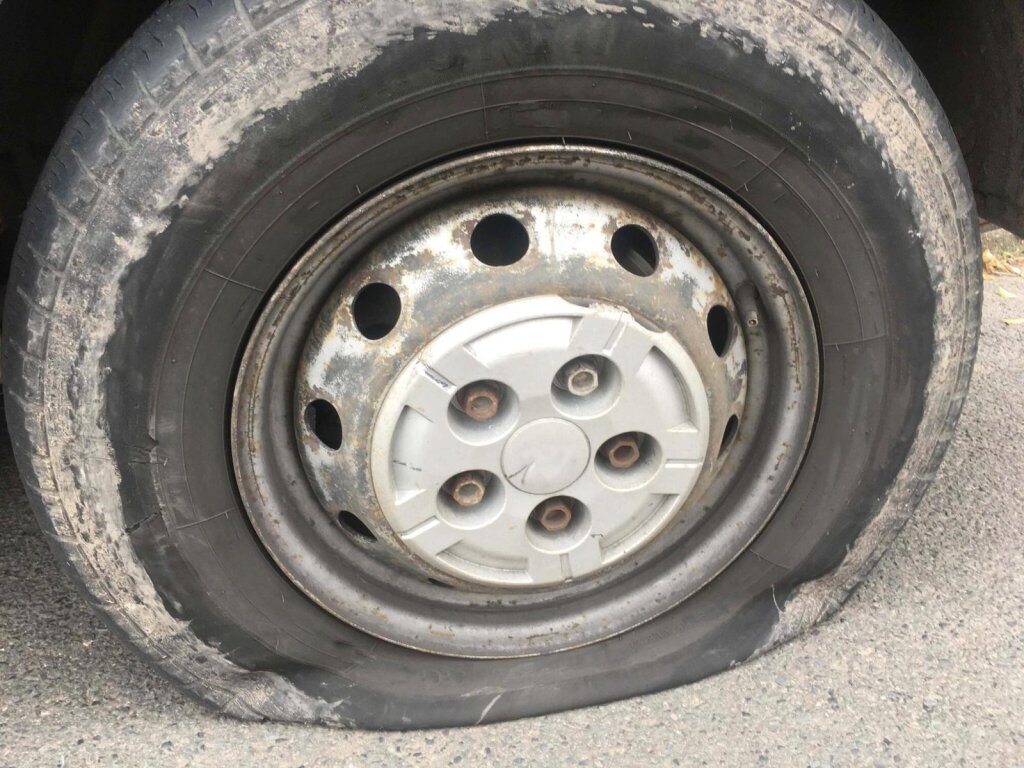
Importance of Run-Flat Tires for Trucks
Run-flat tires are essential for trucks due to the following reasons:
- Enhanced Safety: A flat tire can be dangerous because trucks are frequently used in hazardous or remote areas. Run-flat tires let the driver keep control and go to a secure location so they can get fixed.
- Load protection: Vehicles transporting expensive or delicate goods cannot afford to run the risk of cargo damage from unplanned halts brought on by flat tires. Run-flat tires offer an extra degree of safety.
- Decreased Downtime: Time is money in the trucking business. After a tire problem, being able to drive lowers downtime and can help you avoid missing deadlines.
- Reduced Need for Spare Tires: Keeping spare tires on a truck increases its weight and decreases its fuel efficiency. The need for spare tires is greatly diminished when run-flat tires are used.
- Improved Efficiency: Run-flat tires contribute to greater overall efficiency in truck operations by reducing the frequency of stops for tire changes or repairs.
Understanding Run-Flat Tires
Run-flat tires, intended to maintain a vehicle’s safety and travel vehicle, even in the event of a tire puncture or major pressure drop, mark a significant advancement in automotive tire technology. The ability of run-flat technology to sustain the vehicle’s weight and preserve the tire’s form even without air pressure makes it so revolutionary.
Basic Concepts of Run-Flat Tires
Run-flat tires are made with strengthened sidewalls that allow them to bear the weight of a car even after a puncture. Driving a short distance will enable drivers to get to a safe place or repair facility. In the case of a flat tire, this technology reduces the need for quick tire changes, increasing safety and convenience.
- Self-Sustained Framework: The most popular self-supporting run-flat tires have reinforced sidewall construction. Even with air loss, this strengthening enables the tire to carry the car’s weight.
- Auxiliary Supported System: Another method of run-flat technology relies on the wheel’s supplementary support wheel to withstand the car’s weight in the event of a puncture.
- Pressure Monitoring: A tire Pressure Monitoring System (TPMS), which warns the driver of a substantial decrease in tire pressure, is frequently used with run-flat tires. This adds an extra layer of safety.
- Limitations on Speed and Distance: A car with run-flat tires may generally be kept going for 50–100 miles (80–160 km) at a slower pace of roughly 50 mph (80 km/h) following a puncture. These limitations, however, may change depending on the vehicle load and tire design.
The Evolution of Run-Flat Tire Technology
The need for increased safety and convenience in automotive travel has driven the development of run-flat tires. The evolution of this technology can be traced through several key stages:
- Early Developments: The concept of run-flat tires dates back to the early 20th century, but its practical applications were limited due to technological constraints.
- Advancements in Materials: The introduction of new materials and manufacturing processes in the late 20th century allowed for more robust sidewalls capable of supporting vehicles without air pressure.
- Integration with Vehicle Systems: Modern run-flat tires are often integrated with advanced vehicles like TPMS, enhancing overall vehicle safety and performance.
- Diverse Applications: Initially found primarily in high-end or military vehicles, run-flat technology has become increasingly common in passenger cars and, more recently, in trucks and commercial vehicles.
- Continued Innovation: Today, the focus is on improving the performance, comfort, and affordability of run-flat tires, making them an attractive option for a broader range of vehicles.
The invention of run-flat tire technology is a significant achievement in vehicle safety and dependability. With continuous advancements, these tires—improving efficiency and road safety—appear more frequently in passenger automobiles and trucking.
How Run-Flat Tires Work
Run-flat tires are an innovation in tire technology that provides a safety solution for one of the most frequent and hazardous issues drivers encounter: flat tires. These cutting-edge tires enable cars to drive safely for a certain distance, even after a puncture, since they are made to tolerate the loss of tire pressure. This feature reduces the urgent requirement for roadside tire changes while improving safety and offering ease. Understanding the functioning of run-flat tires is essential in acknowledging their significance in contemporary automotive safety and effectiveness.
The Science Behind Run-Flat Tires
Run-flat tires are a marvel of modern automobile innovation, developed to solve the abrupt tire deflation issue. Their primary purpose is to keep a car going when it has wholly lost air pressure from a puncture or leak for a certain number of miles. A unique combination of materials and design makes this possible.
The science behind these tires is their capacity to bear the car’s weight even without air. Conventional tires need air pressure to maintain shape and support the vehicle’s weight. On the other hand, run-flat tires depend upon their reinforced sidewalls or other supporting features. Because of its structural integrity, the tire is less likely to collapse or come off the rim, a common problem with regular tires as their pressure drops.
Components of a Run-Flat Tire
Run-flat tires consist of several key components that distinguish them from regular tires:
- Reinforced Sidewalls: These are stiffer and thicker than standard tires. Thanks to their design, they should be able to sustain the car’s weight even with the tire deflated. Additionally, when pressure decreases, this reinforcement aids in tire form retention.
- Beads: Unlike regular tires, run-flat tires frequently have more robust beads. They guarantee the tire is firmly attached to the rim without air pressure.
- Fins for Cooling: There are run-flat tires that have sidewall cooling fins. Since running a tire flat increases friction and temperature, these fins aid in dispersing the heat produced.
- Support Ring (in specific layouts): Run-flat tires with auxiliary support feature a stiff ring that offers assistance in the event of an air leak.
The Role of Tire Pressure Monitoring Systems (TPMS)
TPMSs, or tire pressure monitoring systems, are essential for utilizing run-flat tires properly. These devices monitor the tire pressure and notify the driver if there is a noticeable reduction in pressure. Because run-flat tires can retain their performance and shape even when deflated, it can be challenging to identify a flat tire, which is why this early warning is so important.
Using TPMS, a motorist may be confident they are aware of the state of their tires and can react appropriately, such as slowing down or stopping for a tire replacement or inspection. It is crucial to remember that although run-flat tires can keep a car running for a short while without air, they are not unbreakable and should be changed or fixed as soon as a puncture occurs.
The use of run-flat tires has significantly improved car safety. In the case of a tire puncture, its construction and parts enable drivers to keep control and drive on, lowering the risks connected with abrupt tire deflation. Run-flat tires provide an even more robust safety net when paired with TPMS, guaranteeing drivers are instantly informed of possible tire problems and can take appropriate action.
Benefits of Run-Flat Tires for Trucks
Truck run-flat tires are a game-changer for commercial vehicles on the road, providing many advantages. By keeping trucks running even after a puncture, these specialized tires significantly lower the risk of accidents and downtime brought on by tire failures. Run-flat tires improve on-road safety and need less maintenance, giving truck operators a dependable and affordable option. This introduction examines the benefits of run-flat tires for the trucking industry, mainly how they affect total operating costs, safety, and efficiency.
Enhanced Safety Features
One of the most significant benefits of run-flat tires for trucks is the increased safety they provide. The fact that these tires are made to continue operating even after a puncture significantly decreases the likelihood of unexpected tire deflation-related mishaps. This feature is especially crucial for trucks that frequently tow large loads and are more likely to lose control or topple over in the event of an unexpected flat tire.
The safety benefits include:
Run-flat tires are made with strengthened sidewalls that allow them to bear the weight of a car even after a puncture. Driving a short distance will enable drivers to get to a safe place or repair facility. In the case of a flat tire, this technology reduces the need for quick tire changes, increasing safety and convenience.
- Keeping Things Under Control: In a tire puncture, run-flat tires give the driver more control over the truck since they keep it stable and agile.
- Preventing Accidents: Run-flat tires, mainly when driven at high speeds, can drastically lower the chance of blowout-related accidents by preventing instantaneous deflation.
- Safe Driving Distance: These tires enable the truck to travel a certain distance to reach a secure location for a tire change rather than stopping abruptly in potentially hazardous locations.
Improved Efficiency and Durability
Run-flat tires are not just about safety; they also offer improved efficiency and durability, which are crucial for the trucking industry:
- Reduced Downtime: Being able to drive after a puncture helps reduce the time lost due to tire-related problems, which helps to keep schedules and deliveries on time.
- Extended Lifespan: Compared to regular tires, run-flat tires are often made of more robust materials, which gives them a longer lifespan and improved resistance to deterioration.
- Increased Fuel Economy: Because run-flat tires are more robustly constructed than conventional tires and hold their ideal shape and pressure longer, they can reduce rolling resistance and improve fuel efficiency.
Cost-Benefit Analysis
While run-flat tires can be more expensive than standard tires, a cost-benefit analysis often reveals long-term savings for truck operators:
- Decreased Need for Spare Tires: Driving on a flat tire saves room and weight on the truck, which can result in fuel savings. It also removes the need to carry one or more spare tires.
- Reduced Upkeep Expenses: Over time, run-flat tires’ robustness and lifetime may result in lower maintenance and replacement expenses.
- Enhanced Efficiency and Safety: Run-flat tires’ increased efficiency and safety might result in indirect cost benefits, like cheaper insurance rates, because of fewer accidents and shipment delays.
Run-Flat Tires in Different Truck Applications
The application of run-flat tires extends across various segments of the trucking industry, each with unique demands and challenges. These tires provide crucial safety, reliability, and efficiency benefits, particularly valuable in long-haul trucking, urban and delivery operations, and specialized industrial and construction contexts.
Long Haul Trucking
Long-haul trucking is characterized by extended journeys over vast distances, often involving remote routes. In such scenarios, the advantages of run-flat tires are particularly pronounced:
- Enhanced Safety on Remote Routes: Run-flat tires reduce the risk of accidents due to tire blowouts in remote areas where immediate assistance is unavailable.
- Minimized Downtime and Delays: The ability to continue driving after a tire incident helps maintain schedules, which is crucial in long-haul operations where timely deliveries are essential.
- Reduced Need for Frequent Stops: Carrying spare tires and changing them roadside is less practical for long-haul trucks. Run-flat tires eliminate the need for immediate tire replacement, thus reducing the number of stops and associated labor.
Urban and Delivery Trucks
Urban and delivery trucks face a different set of challenges, including frequent stops, tight schedules, and navigation in congested areas:
- Enhanced Mobility in Emergencies: Unexpected tire deflation can be especially dangerous in cities. Run-flat tires give drivers the control to get out of traffic safely.
- Time Efficiency: The time saved by delaying tire replacement is critical for delivery vehicles running on tight timetables.
- Space Optimisation: Reducing the space needed for a spare tire on smaller delivery vehicles can be a significant benefit, freeing up more room for cargo.
Specialized Industrial and Construction Trucks
Trucks used in industrial and construction settings often operate in challenging terrain and under heavy loads:
- Durability in Harsh Environments: Run-flat tires are especially helpful in off-road environments with a significant chance of tire damage. Compared to regular tires, their sturdy design allows them to survive challenging circumstances.
- Safety Under Heavy Loads: Trucks frequently transport hazardous or large-weight commodities in construction environments. Run-flat tires improve safety by guaranteeing the truck can continue to a safe location for tire replacement or repair even when carrying high loads.
- Business Continuity: Downtime can be expensive in industrial operations, so minimizing disruptions caused by tire problems is critical. Run-flat tires make a significant contribution to efficiency and continuous operation.
Installation and Maintenance of Run-Flat Tires
Including run-flat tires on the list of accessories for your truck can significantly increase economy and safety. Proper selection, installation, and maintenance are essential to guarantee that these tires provide their full benefits. This guide will review the necessary actions and considerations for effectively utilizing run-flat tires in trucking applications.
Selecting the Right Run-Flat Tires for Your Truck
Choosing the appropriate run-flat tires is the first crucial step. Consider the following:
- Compatibility with Your Vehicle: Ensure the run-flat tires you select are compatible with your truck model and the wheel size. Not all run-flat tires fit all vehicles.
- Load and Speed Rating: Check the tire’s load and speed rating. Make sure that the tire can accommodate your truck’s weight and speed requirements.
- Type of Run-Flat Technology: Based on your specific needs and preferences, choose between self-supporting run-flat tires and auxiliary-supported systems.
- Brand and Quality: Opt for reputable brands known for their quality in run-flat technology to ensure reliability and durability.
Installation Process and Best Practices
Proper installation of run-flat tires is pivotal to their performance:
- Use a Professional Service: Run-flat tires should be installed by professionals familiar with their specific requirements and characteristics.
- Special Equipment: Ensure that the service center has the appropriate equipment for installing run-flat tires, as they often require different tools and techniques than standard tires.
- Balancing and Alignment: After installation, it’s essential to align the what’s balance and the vehicle to ensure optimal performance and tire longevity.
- TPMS Calibration: If your truck is equipped with a Tire Pressure Monitoring System (TPMS), it should be calibrated or checked post-installation to ensure it works correctly with the new tires.
Maintenance Tips for Extended Tire Life
Regular maintenance is critical to extending the life of your run-flat tires:
- Periodic Inspections: Inspect your tires for signs of wear, damage, or uneven wear patterns. Even though they can run flat, they are not immune to damage.
- Maintain Proper Inflation: Always keep the tires inflated to the manufacturer’s recommended manufacturer, even though they can operate with less air.
- Rotate Tires Regularly: Regular tire rotation can help achieve uniform wear, extending the lifespan of the tires.
- Avoid Overloading: Never exceed the tires’ load capacity, as overtired can cause excessive wear and increase the risk of tire failure.
Challenges and Limitations of Run-Flat Tires
While run-flat tires offer significant advantages in terms of safety and convenience, they are not without their challenges and limitations. Understanding these aspects is essential for truck operators and fleet managers to make informed decisions about tire choices.
Understanding the Limitations of Run-Flat Tires
Run-flat tires are engineered to provide safety and convenience, but they have certain limitations that need to be considered:
- Limited Range Post-Puncture: Run-flat tires allow you to continue driving after a puncture, but only for a limited distance and at reduced speeds. Typically, this is about 50-100 miles at speeds not exceeding 50 mph.
- Ride Comfort: Due to their reinforced sidewalls, run-flat tires can offer a firmer ride than standard tires. This could impact comfort, especially over longer distances.
- Replacement Availability: Not all tire shops stock run-flat tires, which might be harder to find in remote areas. This can be a significant issue for trucks on long-haul routes.
- Weight and Fuel Efficiency: Run-flat tires are generally heavier than standard tires, reducing fuel efficiency slightly.
- Cost: Run-flat tires are often more expensive than standard tires regarding initial purchase and replacement costs.
Addressing Common Concerns and Misconceptions
There are several misconceptions about run-flat tires that need clarification:
- Misconception: Run-flats are Indestructible: While run-flat tires can handle a puncture, they are not invincible. They can still suffer from wear and tear and damage from road hazards.
- Misconception: No Need for Tire Checks: Regular tire checks are still essential. Run-flat technology doesn’t negate the need for repairs and maintenance.
- Misconception: Run-Flats Work in All Puncture Scenarios: Run-flat tires are designed to handle standard punctures, but severe tire damage, such as large gashes or sidewall damage, may still render the tire inoperable.
- Misconception: Immediate Replacement is Not Necessary: It’s a common misconception that these flats don’t need immediate attention or a puncture. However, having the tire inspected, replaced, or repaired as soon as possible is crucial.
While run-flat tires provide significant safety and convenience benefits for trucks, understanding their limitations and addressing common concerns is crucial. Truck operators should weigh these factors against the benefits to make the best decision for their needs and circumstances. Proper education and maintenance practices can mitigate some of these limitations, maximizing the advantages of run-flat tires.
Future Trends in Run-Flat Tire Technology
Run-flat tire technology, already a game-changer in the automotive industry, is poised for further innovations and advancements. As technology evolves, these tires are expected to become even more integral to the trucking industry, addressing current limitations and opening up new possibilities.
Innovations on the Horizon
Several exciting developments are on the horizon for run-flat tire technology:
- Advanced Materials: Studies are being conducted to find new materials that, combined with reduced durability, can make run-flat tires lighter and more fuel-efficient. Additionally, by improving comfort, these materials may help to mitigate a significant issue with the present run-flat tires.
- Improved Design: After a puncture, tire manufacturers are constantly working to improve the designs of their run-flat tires to increase their speed and distance capabilities. This involves enhancements to the tire’s general structure and store’s reinforcement.
- Smart Tire Technologies: There is a lot of interest in integrating sensor technologies and the Internet of Things. Sensors built into tires that offer real-time information on temperature, air pressure, tread wear, and tire health could make predictive maintenance and increased safety possible.
- Eco-Friendly Solutions: There’s a growing emphasis on There’sability in tire manufacturing. Future run-flat tires may incorporate eco-friendly materials and production processes, aligning with the global push towards environmental responsibility.
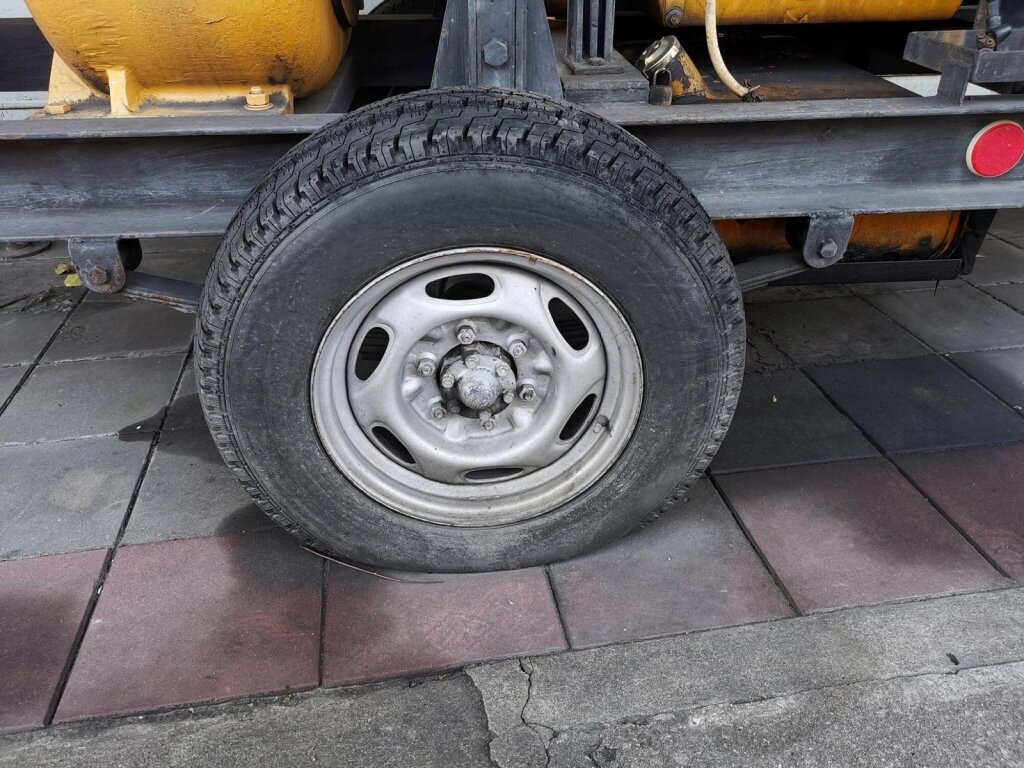
The Future of Run-Flat Tires in the Trucking Industry
The future role of run-flat tires in the trucking industry looks promising and multifaceted:
- Standardization in New Trucks: As the benefits of run-flat tires become more widely recognized, we might see them becoming a standard feature in new trucks, particularly in sectors where safety and uptime are critical.
- Greater Adoption in Varied Truck Segments: From long-haul to urban delivery and specialized industrial vehicles, the use of run-flat tires is expected to expand across different segments of the trucking industry.
- Enhanced Safety Protocols: With the increased adoption of run-flat tires, the trucking industry could shift safety standards and protocols, potentially leading to revised regulations and insurance policies.
- Cost Reduction and Accessibility: As the technology matures and production scales up, the cost of run-flat tires is expected to decrease, making them more accessible for a broader range of truck operators.
Conclusion & Recommendations
It is essential to highlight the lessons learned and provide closing thoughts and recommendations as we wrap up our in-depth investigation of run-flat tire technology and its effects on the trucking sector. Run-flat tires significantly advance tire technology, improving truck efficiency and safety. These tires considerably lessen the dangers of sudden tire deflation because they can sustain a puncture and work for a certain distance.
Some important topics discussed were the fundamental technology and parts of run-flat tires, their advantages in various trucking applications, and their significance in terms of installation and upkeep. We also discussed the drawbacks and restrictions of run-flat tires, advising on handling frequent issues. Future developments in run-flat tire technology point to continued improvements, making these tires more appealing for truck drivers.
Final Thoughts and Recommendations
For truck operators and fleet managers, the decision to switch to or incorporate run-flat tires should be informed by a thorough understanding of their benefits and limitations. It is recommended to assess the specific needs of your operations, considering factors such as the type of routes, the nature of cargo, and cost implications. Regular maintenance and adherence to best practices in tire care are paramount to fully leveraging the advantages of run-flat tires. As technology advances, staying updated with the latest developments in tire technology will be crucial in making informed choices.
Transitioning to the right tires for your trucks is a significant step toward enhancing safety, efficiency, and overall operational effectiveness. At “Tires Easy Truck,” we understand “tires’ critical” role in your tires. We offer a wide range of run-flat tires tailored to meet the diverse needs of the trucking industry. Our selection includes the latest innovations and trusted brands, ensuring you get the best quality and performance.
Explore Our Collection at Tires Easy Truck
We invite you to browse our selection and discover the ideal run-flat tires for your trucks. With Tires Easy Truck, you can be “assured of finding” tires that align with your specific needs and offer durability, safety, and efficiency. Visit our website, Tires Easy Truck, to explore our products and make your choice.
Shop Now. Find the perfect run-flat tires for your fleet today, and drive confidently, knowing you’re equipped with the best technology.
FAQs
Can you put run-flat tires on a truck?
Yes, run-flat tires can be installed on trucks. These tires are designed to support the vehicle’s weight even after a car is made, making them suitable for trucks that often carry heavy loads. However, it’s essential to select run-fit tires that are specifically rated for the weight and usage of your particular truck.
What is the disadvantage of run-flat tires?
The main disadvantages of run-flat tires include a generally firmer ride due to stiffer sidewalls, higher replacement costs than standard tires, and limited availability in some sizes or styles. Additionally, they can only be driven for a little distance (usually 50-100 miles) at reduced speeds after a puncture.
What is the purpose of run-flat tires?
The primary purpose of run-flat tires is to ensure that a vehicle can continue to be driven safely for a limited distance, even after the tire has lost all air pressure due to a puncture. This feature enhances safety by preventing roadside tire changes and maintaining vehicle control during a tire blowout.
Do trucks get flat tires?
Yes, trucks do get flat tires. Like any other vehicle, they are susceptible to tire punctures and damage. The impact of a flat tire on a car can be significant, especially if carrying heavy loads or traveling on busy roads, which makes run-flat tires or regular tire maintenance crucial for trucks.
Which run-flat tires are the best?
The “best” run-flat tires depend o” you” specific needs, including the type of vehicle, driving conditions, and personal preferences. Popular brands like Michelin, Bridgestone, and Pirelli offer highly-rated run-flat tires known for their durability, performance, and safety features.
What is the quietest run-flat tire?
The quietest run-flat tires are typically those designed with advanced noise-reduction technologies. Brands like Michelin and Bridgestone often receive positive reviews for their quieter run-flat tire models, which incorporate unique tread designs and materials to minimize road noise.
How much more do run-flat tires cost?
Run-flat tires cost more than standard tires, often by about 20-30%. The exact cost difference can vary based on the tire brand, size, and specific features. While they are more expensive up front, their ability to prevent immediate roadside tire changes can offset the initial higher cost over time.






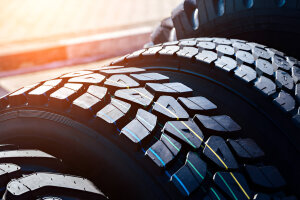
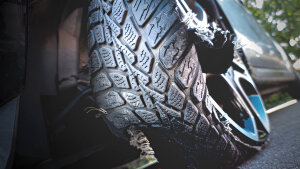

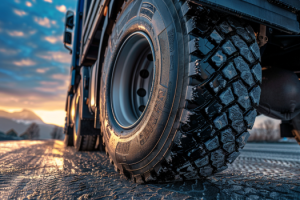
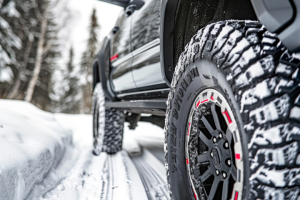
 English
English Français
Français Español
Español